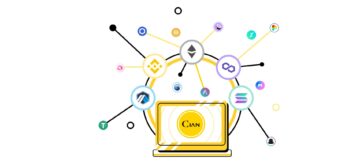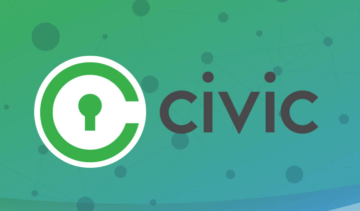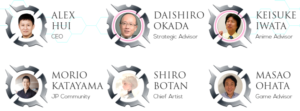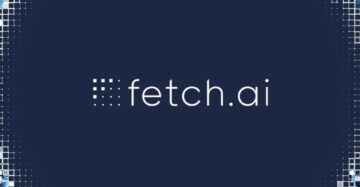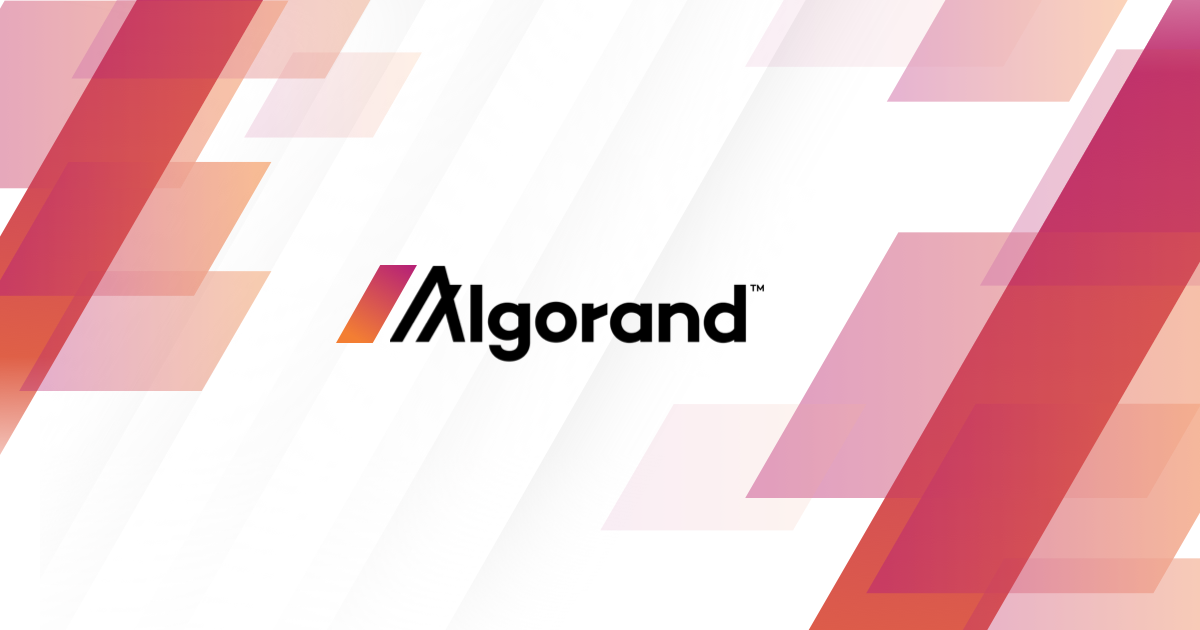
Navigating the world of cryptocurrencies and blockchain technology can often seem daunting to both beginners and seasoned investors alike. With a plethora of digital currencies emerging over the past decade, it can be challenging to distill which ones hold true potential. Among the myriad of options, Algorand stands out as a promising candidate.
Let’s delve into Algorand’s multifaceted blockchain network, starting with its origin and moving on to explain its unique features, its native cryptocurrency ALGO, and even how it stacks up against the well-established Ethereum. By the end of this guide, you’ll have a strong foundation to better understand Algorand’s operations, advantages, and its position in the blockchain universe. So, whether you’re a curious newcomer or a keen investor looking to diversify your portfolio, read on to get an in-depth insight into the world of Algorand.
Background
Algorand, a prominent name in the blockchain space, is the brainchild of cryptography stalwart Silvio Micali. A distinguished professor at MIT and Turing Award laureate, Micali’s contributions to the field date back to the 1980s. His extensive repertoire includes the origination of numerous blockchain-related protocols such as probabilistic encryption, zero-knowledge proofs, and verifiable random functions.
The year 2017 marked Algorand’s inception, with substantial financial backing secured the following year. By July 2018, Algorand had a functioning testnet, paving the way for public access in April 2019. Just two months later, the mainnet went live, marking a significant milestone for the project.
At the helm of Algorand’s operations are two distinct entities. Algorand, Inc., a profit-oriented venture, takes the lead in developing the code. In contrast, the Algorand Foundation, a non-profit organization, focuses on cultivating the ecosystem, steering community governance, and nurturing developer education. Institutions such as MIT and UC Berkeley, among others globally, are part of the Foundation’s Global University Program. Additionally, the Foundation actively promotes blockchain awareness by sponsoring an array of events ranging from hackathons to educational programs and certifications.
In an ambitious move to foster innovation and growth within the Algorand ecosystem, the Algorand Foundation launched the Algorand Asia Accelerator and Algorand Europe Accelerator in 2020. These initiatives aim to support ambitious projects and developers interested in Algorand by providing comprehensive assistance. The support ranges from devising strategies to executing launches, thereby bolstering the growth and vibrancy of the Algorand ecosystem.
What is Algorand?
Algorand is recognized as a self-governing, decentralized platform. Its creation has been motivated by the vision of a future-oriented financial system. Unique in its architecture, Algorand utilizes a pure proof-of-stake (PoS) mechanism, establishing it as a pioneer in the blockchain world.
Algorand’s offerings encompass a suite of high-performance layer 1 blockchains that strike a balance between security, scalability, privacy, and transaction finality. These layer 1 solutions are essentially modifications to the foundational protocol, enhancing the system’s scalability. The most commonly observed layer 1 modifications include adjustments to the consensus protocol and the implementation of sharding.
Being a public smart contract blockchain that incorporates a staking model, Algorand is adept at facilitating the development of decentralized applications (dApps). Its capabilities extend to providing scalability solutions, an attribute that’s increasingly sought after in the blockchain industry. High gas fees associated with Ethereum have prompted dApp developers and decentralized finance (DeFi) enthusiasts to explore alternative blockchain platforms. This has led to Algorand emerging as a compelling alternative to Ethereum, particularly for dApp development and DeFi applications.
The Algorand Two-Tiered Architecture
Algorand’s architecture is uniquely designed as a two-tiered blockchain system. The foundation layer, Layer 1, supports various key processes such as the execution of smart contracts, creation of assets, and atomic swaps among assets. These functions operating on Layer 1 of Algorand’s blockchain aids in ensuring both security and interoperability.
Within this fundamental layer, platforms and users can generate Algorand Standard Assets (ASAs), which serve as a representation of new or existing tokens on the Algorand blockchain. This is akin to the functionality of ERC-20 tokens on the Ethereum network. In terms of security, Algorand’s platform executes simple smart contracts as Layer-1 Algorand Smart Contracts (ASC1s). This means they uphold the same level of security as the consensus protocol.
Layer 2 in Algorand’s architecture caters to the more intricate aspects of smart contracts and dApp development. This stratification of the network into Layer 1 and Layer 2 plays a significant role in enabling efficient transaction processing in Algorand. While the more complex smart contracts are handled off-chain on Layer 2, Layer 1 focuses on the swift processing of simpler transactions, unencumbered by the complexities of larger smart contracts.
$ALGO Token
The Algorand network is underpinned by its native cryptocurrency, ALGO, which holds an instrumental position within its system. Algorand’s distinct protocol design ensures that rewards garnered by validators for block production are proportionally distributed amongst all ALGO coin holders, as opposed to being exclusively allotted to the block producers.
In pursuit of an ideally fair coin distribution mechanism, Algorand’s method of decentralizing its ALGO coins is a progressive process. In the present scenario, the Algorand Foundation holds a substantial quantity of ALGO. This has led critics to perceive the protocol as centralized in the short term. Nevertheless, Algorand’s equitable reward distribution structure is engineered to progressively counteract network centralization, aiming for a more democratized system in the long run.
ALGO Auctions
ALGO was initially introduced to the market via an Initial Exchange Offering (IEO) on Binance. The driving belief behind this decision was the conviction that the market itself should be the ultimate determinant of the asset’s value. To that end, tokens were dispensed using a Dutch auction mechanism.
In a Dutch auction, a method of public offering, the price of the offering is set only after all bids have been received. This process allows for the determination of the highest possible price at which the entire offering can be sold. During such an auction, investors propose a bid specifying both the quantity and price they’re willing to commit to.
Algorand VS Ethereum
Drawing a definitive conclusion on whether Algorand is an “Ethereum killer” isn’t straightforward. Nonetheless, it’s evident that Algorand presents certain advantages over Ethereum, such as its superior transaction speed and the absence of gas fees. In Algorand, the minimal transaction fee, set at 0.001 ALGO coins, is solely determined by the transaction size, as opposed to the network congestion that often impacts Ethereum’s gas fees.
The Algorand Standard Asset (ASA) and Ethereum’s ERC-20 token share a similarity in their allowance for the creation of smart contracts. However, while ERC-20 smart contracts inevitably contribute to network congestion and increase gas costs on Ethereum, ASA smart contracts can be executed off-chain, significantly reducing transaction fees.
Furthermore, bridges established between ASA and ERC-20 enable Algorand applications to interact seamlessly with Ethereum applications. This interoperability allows for the swift transfer of cryptocurrencies like Tether (USDT) to ALGO at a rate of 1000 transactions per second. This exchange efficiency is a promising aspect of Algorand’s potential and utility within the blockchain landscape.
Conclusion
In the ever-evolving landscape of blockchain technology and cryptocurrencies, Algorand emerges as an impressive contender. It stands out with its unique two-tiered architecture, cutting-edge proof-of-stake consensus protocol, and its token ALGO, all of which provide a secure, efficient, and scalable platform for a wide range of applications. Moreover, its approach to equitably distribute rewards and its potential as a strong alternative to Ethereum make it an intriguing choice for investors and developers alike. As we continue to monitor Algorand’s trajectory in this dynamic domain, its commitment to decentralization, transparency, and interoperability signals a promising future for this innovative blockchain platform.
- SEO Powered Content & PR Distribution. Get Amplified Today.
- EVM Finance. Unified Interface for Decentralized Finance. Access Here.
- Quantum Media Group. IR/PR Amplified. Access Here.
- PlatoAiStream. Web3 Data Intelligence. Knowledge Amplified. Access Here.
- Source: https://www.asiacryptotoday.com/algorand/
- :has
- :is
- $UP
- 1
- 2017
- 2018
- 2019
- 2020
- a
- accelerator
- access
- actively
- Additionally
- adjustments
- advantages
- After
- against
- aids
- aim
- Aiming
- ALGO
- Algorand
- Algorand blockchain
- Algorand Foundation
- alike
- All
- allows
- alternative
- ambitious
- among
- amongst
- an
- and
- applications
- Applications (DApps)
- approach
- April
- architecture
- ARE
- Array
- AS
- ASA
- asia
- Asia Crypto Today
- aspect
- aspects
- asset
- Assets
- Assistance
- associated
- At
- Atomic swaps
- Auction
- award
- awareness
- back
- background
- backing
- Balance
- BE
- been
- Beginners
- behind
- being
- belief
- Berkeley
- Better
- between
- bid
- binance
- Block
- Block Production
- blockchain
- blockchain industry
- blockchain network
- blockchain platform
- Blockchain space
- blockchain system
- blockchain technology
- Blockchain-related
- blockchains
- both
- bridges
- by
- CAN
- candidate
- capabilities
- caters
- Centralization
- centralized
- certain
- certifications
- challenging
- choice
- code
- Coin
- Coins
- commit
- commitment
- commonly
- community
- compelling
- complex
- complexities
- comprehensive
- conclusion
- congestion
- Consensus
- continue
- contract
- contracts
- contrast
- contribute
- contributions
- conviction
- Costs
- creation
- Critics
- crypto
- cryptocurrencies
- cryptocurrency
- cryptography
- curious
- currencies
- cutting-edge
- dapp
- DApp developers
- DApps
- Date
- decade
- Decentralization
- decentralized
- Decentralized Applications
- Decentralized Finance
- decentralized finance (DeFi)
- decentralized platform
- decision
- DeFi
- definitive
- democratized
- Design
- designed
- determination
- determined
- Developer
- developers
- developing
- Development
- digital
- digital currencies
- distinct
- Distinguished
- distribute
- distributed
- distribution
- diversify
- domain
- driving
- during
- Dutch
- dynamic
- ecosystem
- Education
- educational
- efficiency
- efficient
- emerges
- emerging
- enable
- enabling
- encompass
- encryption
- end
- enhancing
- ensures
- ensuring
- enthusiasts
- Entire
- entities
- equitable
- ERC-20
- essentially
- established
- establishing
- ethereum
- ethereum network
- Ethereum's
- Europe
- Even
- events
- evident
- exchange
- exclusively
- executed
- Executes
- executing
- execution
- existing
- Explain
- explore
- extend
- extensive
- facilitating
- fair
- Features
- fee
- Fees
- field
- finality
- finance
- financial
- financial system
- focuses
- following
- For
- For Investors
- Foster
- Foundation
- from
- functionality
- functioning
- functions
- fundamental
- future
- GAS
- gas fees
- generate
- generated
- get
- Global
- Globally
- governance
- Growth
- guide
- Hackathons
- had
- handled
- Have
- High
- high-performance
- highest
- his
- hold
- holders
- holds
- How
- However
- HTTPS
- IEO
- Impacts
- implementation
- impressive
- in
- in-depth
- Inc.
- inception
- include
- includes
- incorporates
- Increase
- increasingly
- industry
- inevitably
- initial
- Initial Exchange Offering
- initially
- initiatives
- Innovation
- innovative
- insight
- institutions
- instrumental
- interact
- interested
- Interoperability
- into
- intriguing
- introduced
- investor
- Investors
- IT
- ITS
- itself
- July
- just
- Keen
- Key
- landscape
- larger
- later
- launched
- launches
- layer
- layer 1
- Layer 2
- lead
- Led
- Level
- like
- live
- Long
- looking
- mainnet
- make
- marked
- Market
- marking
- means
- mechanism
- method
- milestone
- minimal
- MIT
- model
- Modifications
- Monitor
- months
- more
- Moreover
- most
- motivated
- move
- moving
- multifaceted
- name
- native
- network
- Nevertheless
- New
- newcomer
- non-profit
- non-profit organization
- numerous
- observed
- of
- offering
- Offerings
- often
- on
- ones
- only
- operating
- Operations
- opposed
- Options
- or
- organization
- Origin
- origination
- Others
- out
- over
- part
- particularly
- past
- Paving
- pioneer
- platform
- Platforms
- plato
- Plato Data Intelligence
- PlatoData
- plays
- plethora
- portfolio
- PoS
- position
- possible
- potential
- present
- presents
- price
- privacy
- process
- processes
- processing
- Producers
- Production
- Professor
- Program
- Programs
- progressive
- progressively
- project
- projects
- prominent
- promising
- promotes
- Proof-of-Stake
- proof-of-stake (PoS)
- proofs
- propose
- protocol
- protocols
- provide
- providing
- public
- pursuit
- quantity
- random
- range
- ranging
- Rate
- Read
- received
- recognized
- reducing
- representation
- Reward
- Rewards
- Role
- Run
- same
- Scalability
- scalable
- scenario
- seamlessly
- seasoned
- Second
- secure
- Secured
- security
- seem
- serve
- set
- sharding
- Share
- Short
- should
- signals
- significant
- significantly
- Simple
- Size
- smart
- smart contract
- Smart Contracts
- So
- sold
- solely
- Solutions
- Space
- speed
- sponsoring
- Stacks
- Staking
- standard
- stands
- Starting
- straightforward
- strategies
- strike
- strong
- structure
- substantial
- such
- suite
- superior
- support
- Supports
- Swaps
- SWIFT
- system
- takes
- Technology
- term
- terms
- terms of security
- testnet
- Tether
- Tether (USDT)
- that
- The
- The Block
- the world
- their
- theme
- thereby
- These
- they
- this
- to
- today
- token
- Tokens
- trajectory
- transaction
- Transaction Fees
- transaction speed
- Transactions
- transfer
- Transparency
- true
- turing
- two
- ultimate
- underpinned
- understand
- unique
- uniquely
- Universe
- university
- Uphold
- USDT
- users
- using
- utility
- utilizes
- validators
- value
- various
- venture
- verifiable
- via
- vision
- vs
- was
- Way..
- we
- went
- were
- What
- What is
- whether
- which
- while
- wide
- Wide range
- willing
- with
- within
- world
- year
- Your
- zephyrnet
- zero-knowledge
- zero-knowledge proofs

